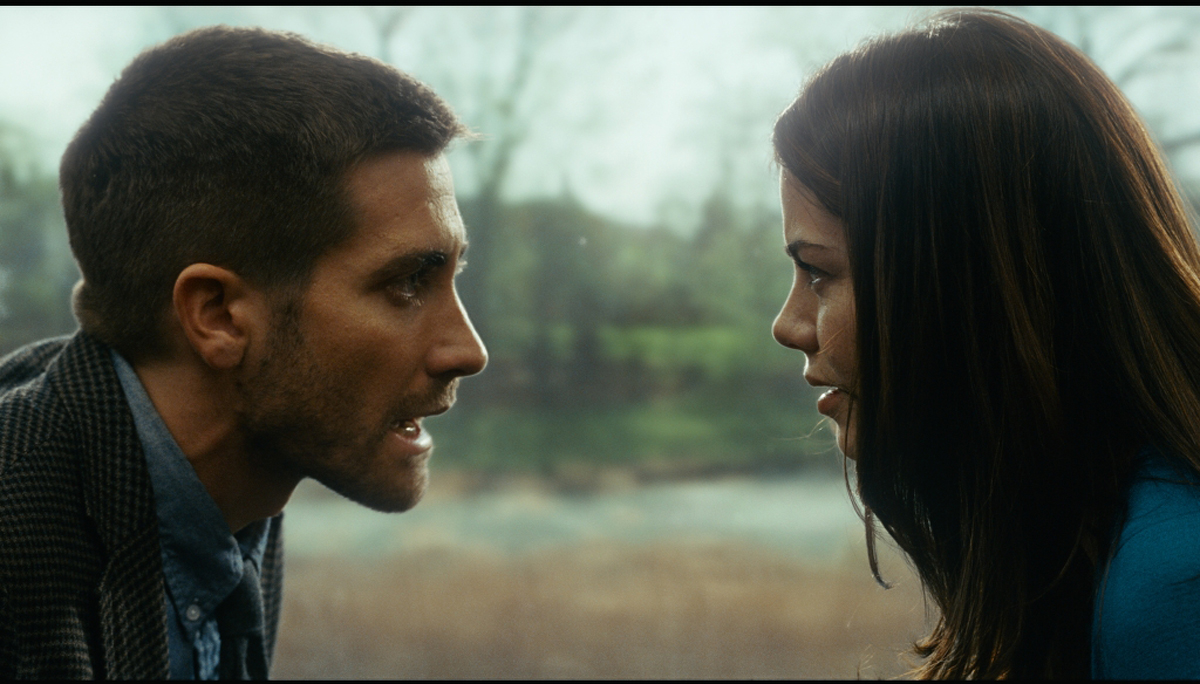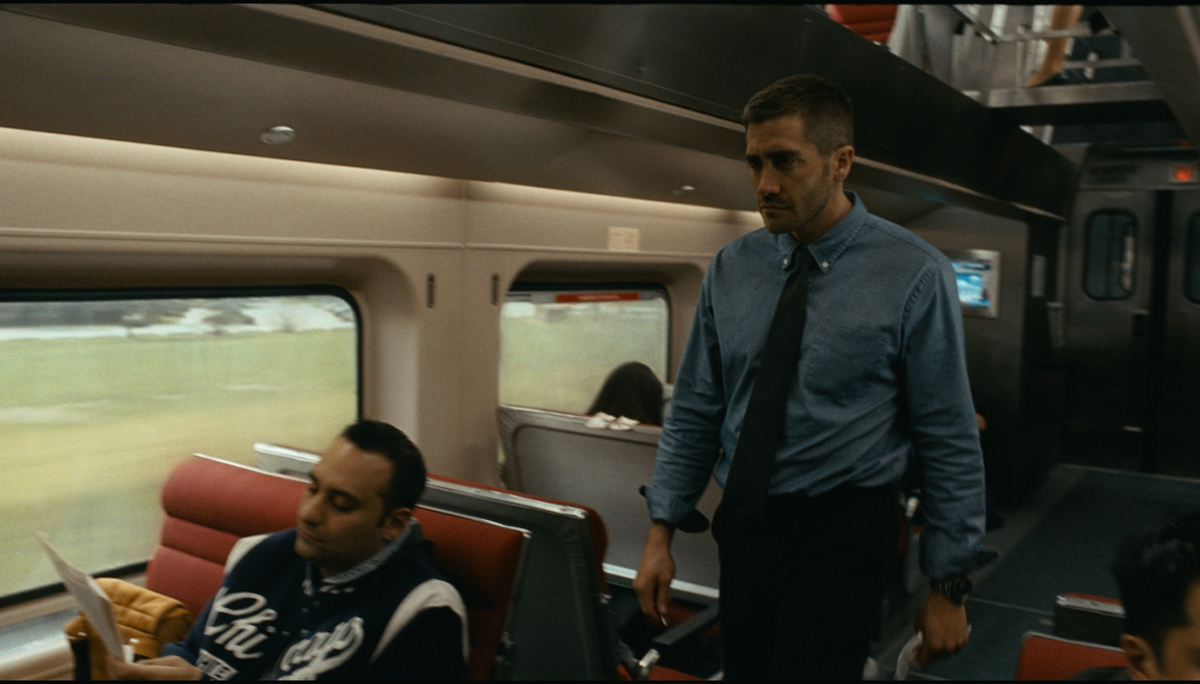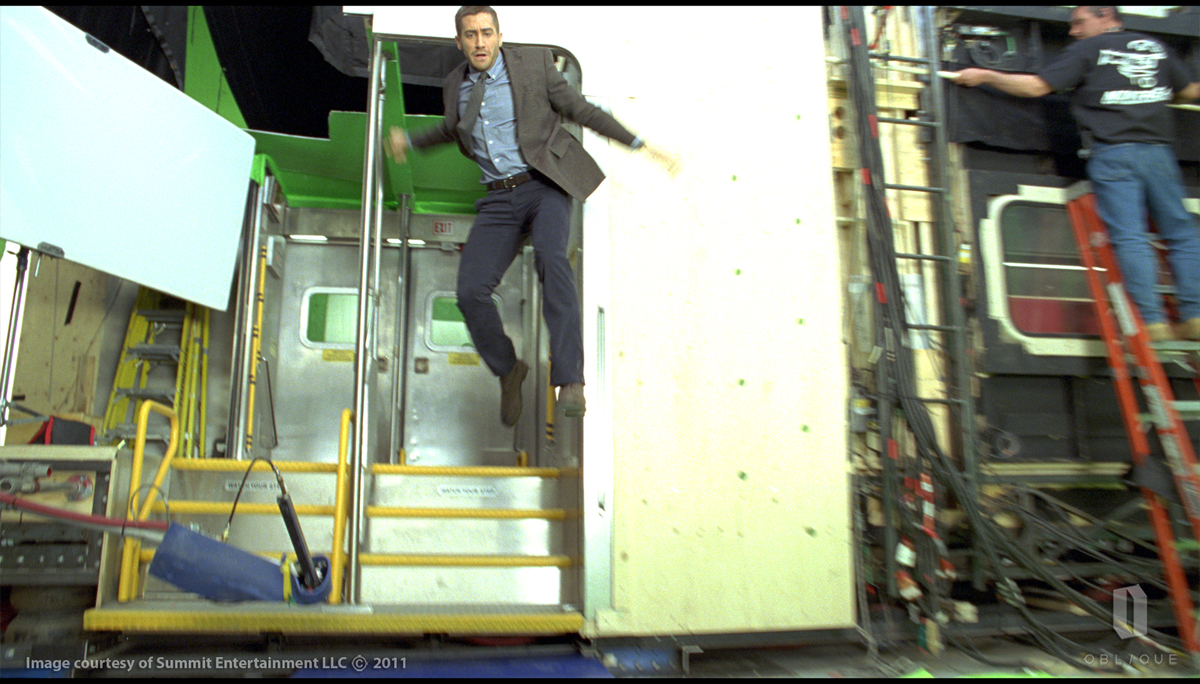Before overseeing movies, Louis Morin was a freestyle skier then began working on commercials. In 2000, he joined Buzz Image where he oversaw such films as THE AVIATOR, THE FOUNTAIN, or THE ETERNAL SUNSHINE OF THE SPOTLESS MIND. In 2006, he became freelance supervisor and supervised the VFX for films like I’M NOT THERE, THE AMERICAN or MR. NOBODY.
What is your background?
One day at 14 years old, I went to see 2001: A SPACE ODYSSEY. I was hooked, I wanted to make films like this! How can a guy can make movies like this? So I became a World Cup freestyle skier, I shot ski films, made commercials with intensive vfx, and work ten years at Buzz as a vfx supervisor.
How did the collaboration with director Duncan Jones?
Duncan knew what he wanted to do with this movie. He inspired himself through Gondry’s methodology. So what’s best than hiring the VFX supervisor of ETERNAL SUNSHINE!
Duncan gave me his trust pushed me even further to make VFX as good as possible. Although we didn’t have the A studio level of vfx budget on this film.
For more infos: http://www.mtv.com/news/articles/1661141/source-code-jake-gyllenhaal.jhtml
Does his experience in visual effects with with his first movie, MOON, helped hime to handle this project?
Any experience is a valid one, on this movie we opted full CG for the train where in MOON they shot miniatures. Also his commercial experience was always of use to challenge me and his way of always finding cool references to inspire us.
Can you tell us how you get involved on this movie?
SOURCE CODE was planned to shoot in Montreal. They contacted me and as my Michel Gondry connection was a selling point.
How was the shooting of the sequence in the small station? What was the actual size of the set and where did you shoot this sequence?
We started to shot right in the middle of winter, the temperature in Montreal was minus 18degree celcius, we were supposed to shoot exteriors before shooting the train in studio.
In pre production I offered them to shoot the other way around. The producers looked outside at the blizzard and gladly accepted. This would mean we wouldn’t know what we would get for the exterior train plates. Our DOP, Don Burgess devised a shooting plan with a general ambiant light with little light interaction. We would then add light interaction in post. Rodeo FX devised and wrote scripts to have interactive light reacting to background plates.
So when it was time to shoot our train station which was in Ottawa the production lost the location. Barry Chusid, the production designer, proposed to build a set, we agreed to build only the first level, there would be no tracks, no train, and the crew parking on the other side would act as the one of the station. All this became a heavy duty vfx sequence, adding a roof cg is fairly easy and looks great. But we pushed the envelope as Duncan wanted a better, more realistic parking opposite the train station. So based on the references I shot in Chicago, Modus had to rebuilt the whole parking cars, street, trees, suburbs and Chicago skyline in CG.
 |
 |
Can you explain to us how you choose the different VFX vendors?
I have through years worked with extremely talented artists, I keep track of them and follow them wherever they go. On MR. NOBODY, I used 3 vfx houses, Rodeo FX, Modus FX and Fly Studio. On SOURCE CODE, we added 3 more so we had 6 houses total, Oblique FX, Mr. X, et MPC Vancouver.
How was the sharing of the different assets between the vendors?
We try to develop a collaboration in between houses so this way we can tackle projects that would normally go to London, LA or New Zealand. This film is a good model of this kind of strategy, it was a good rehearsal, as far as cg train model this great, for the new task of the parking lot it could have been better.
How was created the CG train?
As always we had multiple reference HDR stills and live shoot references. With this Modus created seamless CG train.
 |
 |
Can you explain to us how you planify and shot the backgrounds for the train interiors?
We used a multi camera system, rented from Mike Wassel that he used on TOKYO DRIFT. We had 2 set of 3 35mm cameras with 21mm lenses at 20 degrees each converging as much as it is physically possible their nodal point. All these were synced together. These created 5K plates that were stitched and to fit various lenses and camera angle. So we shot on a real train through the windows, all the side, front and back plates needed. We also shot this at our set train station location with all our extras. Then all the magic of compositing came into play to fit those plates on 357 green screen shots. Rodeo fx had the lead on this endeavour with help from by Mr. X.
 |
 |
 |
 |
Did you use some digital doubles?
One amazing single shot from Colter (Jake Gyllenhaal) in a vestibule jumping off the train landing on the sidewalk. Duncan wanted a Grand Theft Auto video game raggedy doll stunt. He sent me references of Endorphin a software body simulation.
 |
 |
We used it as a first pass, but Oblique ended up redoing everything in animation. The shot starts on a single take of Colter jumping off in the studio, he then becomes completely virtual to catch up the real Colter finishing the roll on the train platform studio piece. Oblique did a fantastic job on the virtual stuntman it looks really good!
 |
 |
Can you explain to us how was created the crash sequence of the train?
In Chicago heading to the airport after our location survey, I spotted a train overpass. I was thinking out loud and mentioned to Duncan that it would be great that the train crashes onto a super highway.
Enough was said, Duncan started to work on boards with this in mind.
Then came the multiple versions, 65 animatics, done by Modus. We had train car crashing, in a suburby area on a busy commercial street. We also had some dramatic helicopter views, building burnings, car crashing, everything that we couldn’t afford! So we had to comprise the level of action. In post, Duncan and Paul Hirsch the editor chose some helicopter train shots I did near Chicago. During the shoot as a bonus material I was trying to link the train with the Chicago skyline. Duncan used these shots and linked the train, the explosion and Chicago. So we had to go back to Chicago to cover the missing plates on the ground and moving train for this new location.
 |
 |
Are you involved on the bomb look in the van?
The original bomb was just a flight case, a dirty bomb. « Not dramatic enough », said Duncan, « I want the whole truck filled with explosives. » So Pierre Simon Chaput Lebrun, who as a teenager , blew a few things, came up with a design that Duncan couldn’t refuse! A full enhanced bomb with CG explosives mounted on a rack inside the empty van.
 |
 |
Can you explain to us the creation of the impressive slow-motion explosion shots?
Duncan had his themes design for each 8 minutes and each explosions, One of them was the poetic explosion. When you get that kind of guideline it is certainly inspiring. I thought it should be intelligent fire. Then in pre-production, Don Burgess, the master of light, said to me « I’ve heard this before! On BACKDRAFT, they shot inverted sets, so I requested from the production a real size vertical black train with explosions coming up toward dummies matching our actor’s positions! We shot this with the Phantom at super high speed so we could then ramp the shot.
 |
 |
How were made the shots with the interferences including the one with Michelle Monaghan in which the noise appears on her face?
Duncan wanted a skype glitch fx in 3D. So we tried a lot of variations playing with the triangular approach of our transitions. I wanted to play with a technique inspired by Picasso’s abstract synthetism period using triangle to create and or disguise a character. So we used our body scan done by XYZ and played with thoses polygons shifting changing lighting, texture perspective, etc.
 |
 |
Can you explain the creation of beautiful shot in which all passengers are time frozen?
We did a crane shot in slow motion with static characters. We added a few CG still elements like coffee drop, volumic rays in dust. We added a CG tanker train and a CG superhighway based on HDR plates shot in Chicago.
How was your collaboration with the different VFX supervisors?
After MR NOBODY, a bunch of the artists knows me and also know how to blow me (no pun intended!). The guys are always there with inventive solutions. We are all in the same boat, we are trying everything possible to make the film looks good.
What was the biggest challenge on this project?
Dealing with a short shoot schedule, consequently a tight budget, always under the gun, making sure I get the shots we needed. That was the most difficult challenge.
Was there been a shot or a sequence that prevented you from sleeping?
No, I had very little sleeping time, so for these few hours I was dead asleep!
How many VFX shots are in the movie?
Around 850.
How long have you worked on this project?
One year.
What did you keep from this experience?
The pleasure of making Duncan happy.
What is your next project?
I am ON THE ROAD with Walter Salles directing.
What are the 4 movies that gave you the passion for cinema?
Kubrick 2001 for his hidden Neitzsche ode, Hitchcock for his masterful craft on VERTIGO, PSYCHO, etc. Eiseinstein for his innovative shooting and editing in POTEMKINE and OLD AND NEW. And Zemeckis for his innovative use of vfx in FORREST GUMP using them tell his story and on top of all these, Gondry for his genius mind (quoted worldwide 15,649 times as a genius) on ETERNAL SUNSHINE OF THE SPOTLESS MIND.
A big thanks for your time.
// WANT TO KNOW MORE ?
– fxguide Article about SOURCE CODE on fxguide.
– Source Code: Swiss Official website of SOURCE CODE.
© Vincent Frei – The Art of VFX – 2011







